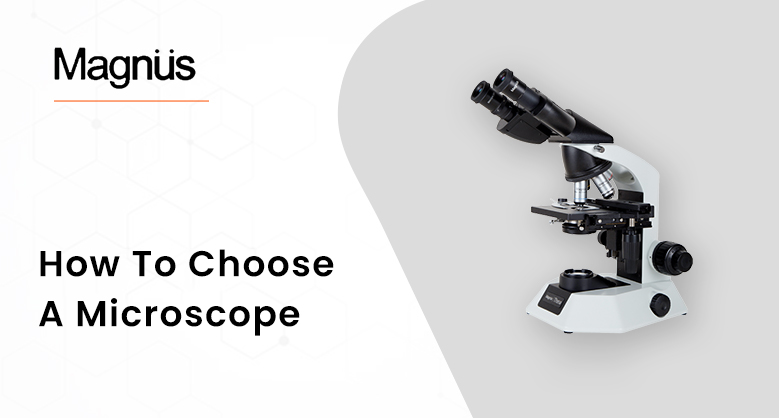HOW TO CHOOSE A MICROSCOPE

There are two main types of microscopes: Optical microscopes and Electron microscopes. What should you choose then, an optical or an electron microscope? The main difference between these two types of microscopes lies in the way the sample to be observed is prepared and passed through. This is what determines the quality of the image (magnification, color, black and white).
OPTICAL MICROSCOPE -
The optical microscope also referred to as a light microscope, is a type of microscope that commonly uses visible light and a system of lenses to generate magnified images of small objects.
The object is placed on a stage and maybe directly viewed through one or two eyepieces on the microscope. In high-power microscopes, both eyepieces typically show the same image.
With an optical microscope, the preparation is placed on a glass slide and irradiated with light rays:
- The resolution is in the range of 200 nanometers.
- For example, it is possible to observe an entire cell.
- However, the magnification is rather limited, meaning that details smaller than 200 nanometers cannot be observed.
ELECTRON MICROSCOPE -
An electron microscope is a microscope that uses a beam of accelerated electrons as a source of illumination. As the wavelength of an electron can be up to 100,000 times shorter than that of visible light photons, electron microscopes have a higher resolving power than light microscopes and can reveal the structure of smaller objects.
With an electron microscope, an electron beam is passed through the prepared sample:
- The magnification is higher.
- However, the image is in black and white.
- Colors can be added digitally on the computer afterwards
What type of optical microscope should you choose?
There are several types of optical microscopes to choose from, depending on the sample you want to observe. First, you have to choose between upright and inverted microscopes.
Upright microscopes:
- The light source is placed below the sample and the sample is observed from above.
- The upright microscope is used for observation and magnification of specimens on slides.
Finite Microscopes
Finite type have focal length of 160mm.There are usually Achromat type of objectives is common used in education field. Semi plan and plan field option are available.
Infinite Microscopes:
Infinite type have 180 mm focal length with the help of Telan lens. Fluorescence attachment can be used in such type of microscopes. The objectives are usually color free plan type for flat field of view so suitable for photography.
Inverted microscopes:
- The light source is placed above the sample and the objectives are below.
- The inverted microscope is used in the observation of cells in in vitro culture and makes it possible to inspect thick objects or objects located on the bottom of Petri dishes.
Microscopes are also available with different types of eyepieces.
Monocular microscopes:
- The sample is observed with only one eye.
- They are inexpensive.
- They are not suitable for prolonged observations.
Binocular microscopes:
- With these microscopes, you observe the sample with both eyes, which reduces eye and muscle fatigue.
- They are suitable for prolonged use.
Trinocular microscopes:
- Both eyes are used to observe.
- A camera, acting as a sort of “third eye”, is attached to the upper part of the microscope to film and record observations.
- These are mainly intended for experienced users for photography.
Digital microscopes:
- They have an LCD screen which allows several people to make observations at once.
- They are very comfortable to use as observation is carried out on the screen.
- The magnification is high, which allows for the observation of sample details.
- The image provided by this type of microscope is very accurate compared to other microscopes.
- It is also possible to film or take pictures of the observation.
- These microscopes are often used in laboratories.
















